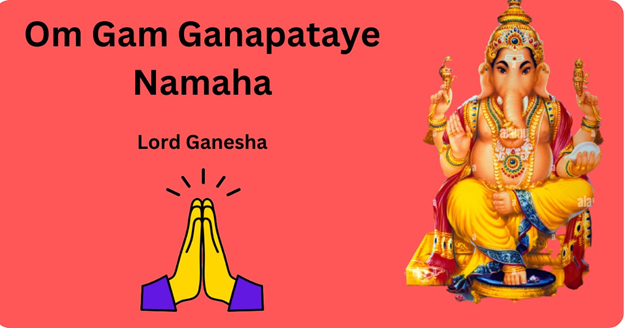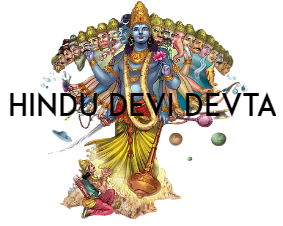Lord Ganesha
Lord Ganesha, also known as Ganapati or Vinayaka, is one of the most widely worshipped deities in Hinduism. He is revered as the Remover of Obstacles, the Lord of Beginnings, and the God of Wisdom and Intellect. Lord Ganesha is easily recognizable due to his distinct elephant-headed appearance.
According to Hindu mythology, Lord Ganesha is the son of Lord Shiva, the Destroyer, and Goddess Parvati, the Divine Mother. The story of his birth varies in different accounts, but a common tale depicts how Parvati created Ganesha out of sandalwood paste to guard her privacy while she bathed. When Lord Shiva returned and was denied entry by Ganesha, a fierce battle ensued. Eventually, Shiva beheaded Ganesha, causing great distress to Parvati. To console her, Shiva promised to bring Ganesha back to life and replaced his head with that of an elephant, granting him immortality and divine powers.
Lord Ganesha
The birth of Lord Ganesha, one of the most beloved deities in Hindu mythology, is an enchanting tale filled with divine significance and symbolism. According to ancient scriptures, Lord Ganesha is the son of Lord Shiva, the destroyer, and Goddess Parvati, the divine mother.
The story of Lord Ganesha’s birth begins with the desire of Goddess Parvati to create a divine guardian who would protect her privacy while she bathed. She decided to shape a figure out of the sandalwood paste she used for her ablutions. Parvati then infused life into this form, giving it consciousness and vitality.
As Parvati finished sculpting the figure, she was immensely pleased with her creation. She named the divine being Ganesha, which means “lord of the ganas” or “lord of the multitudes.” She declared Ganesha her son and assigned him the task of guarding her chamber and preventing anyone from entering while she bathed.
Now, it so happened that during Parvati’s bath, Lord Shiva returned to the abode. To his surprise, he found a young boy standing guard outside Parvati’s chamber, not allowing anyone to enter. Unaware that Ganesha was Parvati’s creation and his own son, Lord Shiva, in his ignorance, tried to enter the chamber. But Ganesha, loyal to his mother’s command, blocked his path and refused him entry.
Lord Shiva, who is known for his quick temper, was incensed by Ganesha’s defiance. In a fit of rage, he drew his trident, his mighty weapon, and struck Ganesha, severing his head in a single blow. When Parvati emerged from her bath and witnessed the tragedy, she was overwhelmed with grief and anguish.
The news of Ganesha’s fate soon reached the other gods and celestial beings, causing a profound sense of sorrow and despair. Realizing the gravity of the situation, Lord Brahma, the creator of the universe, intervened and assured Parvati that all was not lost. He promised that Ganesha would be restored to life.
However, there was one condition. Lord Brahma explained that Ganesha’s head needed to be replaced, but it had to be the head of the first living being that came their way, facing north. The gods embarked on a quest to find such a creature. They searched far and wide, but to their surprise, they found a baby elephant. It was determined that this was the creature destined to lend its head to Ganesha.
With reverence and devotion, the gods gently removed the head of the baby elephant and placed it upon Ganesha’s lifeless body. Instantly, Lord Ganesha came back to life, his consciousness restored, and his divine form enhanced with the iconic elephant head. He emerged as a deity unlike any other, uniquely endearing and powerful.
Upon witnessing Ganesha’s resurrection, Parvati’s grief transformed into immense joy. She embraced her beloved son, who had become a symbol of divine wisdom, strength, and benevolence. Lord Shiva, repentant for his hasty action, embraced Ganesha as his own and declared him to be his son, bestowing upon him the highest honor and respect.
The birth of Lord Ganesha carries deep symbolic significance. His elephant head represents wisdom, intelligence, and foresight. The elephant is known for its gentle nature and memory, and Ganesha’s head signifies the embodiment of these qualities. Ganesha’s round belly symbolizes abundance and contentment, reflecting his role as the remover of obstacles and the granter of blessings.
The story of Lord Ganesha’s birth is cherished and celebrated with great enthusiasm by devotees during the festival of Ganesh Chaturthi. This joyous occasion marks the birth anniversary of Ganesha and is observed with devotion, prayers, and grand festivities. Elaborate Ganesha idols are crafted and worshipped in homes and public places. The festival concludes with the immersion of the idols in water bodies, symbolizing Ganesha’s return to his divine abode.
Lord Ganesha, with his compassionate nature and ability to overcome obstacles, is revered by millions worldwide. Devotees seek his blessings before beginning any new venture, undertaking important tasks, or seeking success in endeavors. Lord Ganesha’s birth story serves as a reminder of the power of perseverance, the importance of humility, and the ability to overcome challenges through wisdom and divine grace.

Ganesh Chaturthi vs. Sankashti Chaturthi: Unraveling the Differences
In the rich tapestry of Hindu festivals, Ganesh Chaturthi and Sankashti Chaturthi stand as two distinct celebrations that hold profound significance. While they both revolve around Lord Ganesha, the elephant-headed deity revered for his wisdom and auspiciousness, these festivals are observed in unique ways, embodying distinct rituals, legends, and cultural nuances. In this comprehensive guide, we will delve into the differences between Ganesh Chaturthi and Sankashti Chaturthi, shedding light on their historical backgrounds, customs, and the fervor with which they are celebrated.
Ganesh Chaturthi: Honoring the Elephant-Headed God
Historical Significance
Ganesh Chaturthi, also known as Vinayaka Chaturthi, marks the birth of Lord Ganesha. This grand festival originated in the state of Maharashtra, India, during the reign of the Maratha ruler Chhatrapati Shivaji Maharaj in the 17th century. Since then, it has become a nationwide celebration, with Mumbai being particularly renowned for its elaborate festivities.
Celebrations
Ganesh Chaturthi spans for a period of ten days, with the grandest culmination on the final day, known as “Anant Chaturdashi.” Devotees install clay idols of Lord Ganesha in their homes and public pandals, adorning them with vibrant decorations. The idols are worshipped with fervor, and aarti (religious songs) and prasad (sacred offerings) are an integral part of the celebrations. On the tenth day, the idols are immersed in water bodies, symbolizing the departure of Lord Ganesha to his heavenly abode.
Cultural Impact
This festival holds immense cultural significance as it fosters community bonding. It also serves as a platform for artists to showcase their creativity through idol-making and pandal decorations. The processions, music, and dance performances during the immersion ceremony create a vibrant atmosphere that resonates with people of all ages.
Sankashti Chaturthi: Seeking Lord Ganesha’s Blessings
Historical Significance
Sankashti Chaturthi, on the other hand, is celebrated in honor of Lord Ganesha but follows a different calendar and ritualistic pattern. It falls on the fourth day of each lunar month, typically during the waning phase of the moon. The word “Sankashti” translates to “deliverance during difficult times,” emphasizing the belief that observing this fast can help overcome obstacles.
Observance
Sankashti Chaturthi is primarily observed as a fasting day by devotees. They wake up early, perform a special puja (prayer ceremony), and consume a meal only after sighting the moon at night. Devotees believe that fasting on this day and seeking Lord Ganesha’s blessings can help remove impediments from their lives.
Regional Variations
While Ganesh Chaturthi is celebrated on a grand scale throughout India, Sankashti Chaturthi is more prevalent in the southern states, especially in Maharashtra, Karnataka, and Andhra Pradesh. In some regions, a more elaborate vrat (fasting) ceremony is observed, where devotees break their fast only after sighting the moon.
Conclusion
In essence, Ganesh Chaturthi is a spectacular, ten-day-long festival that commemorates the birth of Lord Ganesha, while Sankashti Chaturthi is a monthly observance focused on seeking the deity’s blessings through fasting. Both festivals share the common thread of devotion to Lord Ganesha, but they manifest in different forms, catering to the diverse cultural and spiritual landscape of India.
These celebrations not only enrich the religious fabric of the country but also offer a glimpse into the deep-rooted traditions and fervor that define India’s cultural mosaic. While Ganesh Chaturthi is a grand extravaganza, Sankashti Chaturthi is a monthly reminder of devotion and resilience.
In conclusion, understanding the distinctions between Ganesh Chaturthi and Sankashti Chaturthi highlights the diversity and depth of Hindu traditions, allowing individuals to partake in these celebrations with a deeper sense of knowledge and appreciation.

Can you be more specific about the content of your article? After reading it, I still have some doubts. Hope you can help me.
I don’t think the title of your article matches the content lol. Just kidding, mainly because I had some doubts after reading the article.
thank you for commenting. you can visit my websites, https://hindudevidevta.com/ , https://intellectaiworld.com/ , https://vishalversatile.com/ .
Can you be more specific about the content of your article? After reading it, I still have some doubts. Hope you can help me.
Great initiative!!! You can visit my websites, https://intellectaiworld.com/ , https://vishalversatile.com/ , https://hindudevidevta.com/